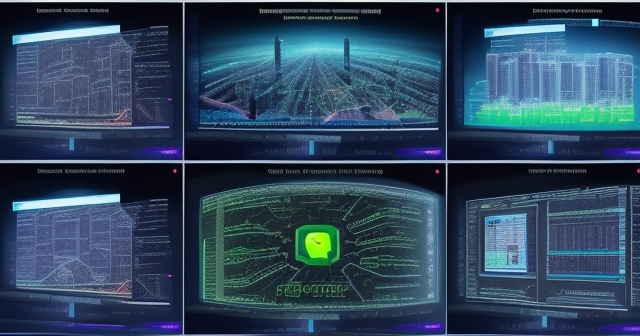
aveva acquisition: Exploring the Impact of Schneider Electric’s Strategic Move
Table of Contents
ToggleUnderstanding a Major Industry Shift: The Schneider Electric Acquisition of AVEVA
In the dynamic world of global industry and technology, major corporate events can reshape markets and signal future trends. For investors and traders navigating these waters, understanding the strategic rationale and financial mechanics behind these shifts is crucial. Today, we’re going to dive deep into one such pivotal event: Schneider Electric’s complete acquisition of AVEVA. This isn’t just a simple business transaction; it’s a move with significant implications for digital transformation, energy management, and the future of industrial software.
Perhaps you’ve heard the names Schneider Electric and AVEVA, but you might not fully grasp how their combination creates something larger than the sum of their parts. Think of it like this: Schneider Electric is a powerhouse in the physical and digital realms of energy management and automation, building the infrastructure and systems that power and control industries. AVEVA, on the other hand, is a leader in the software that *understands*, *optimizes*, and *simulates* these complex industrial environments. Bringing them together is like combining a highly efficient engine with the most advanced navigation and diagnostic systems – the potential is immense.
Over our time together, we’ll unpack the layers of this acquisition, exploring not just the headline numbers, but the deeper strategic purpose, the expected impacts, and what it tells us about the direction industries are heading. We’ll approach this like a guided tour, breaking down complex financial and strategic concepts into understandable steps. Ready to explore this significant industrial software acquisition?

Let’s start with the numbers, because in finance, the figures tell a significant part of the story. The completion of this acquisition, finalized on January 18, 2023, saw Schneider Electric acquire the remaining approximately 40% of AVEVA that it didn’t already own. The price paid for this stake was approximately £9.5 billion, which translates to roughly US $11 billion at the time of the agreement.
To put this into perspective, this deal valued the *entire* AVEVA business at approximately £9.48 billion, or $10.8 billion. Schneider Electric made a cash offer of £31 per share for the remaining shares. Why £31? This price represented a significant premium of approximately 41% over AVEVA’s share price back on August 23, 2022, before the firm intention to make an offer was publicly announced. Paying a premium like this signals strong conviction in the strategic value of the target company and its future prospects.
It’s important to remember that Schneider Electric wasn’t starting from scratch here. They had already held a 60% majority stake in AVEVA since 2017. That initial relationship began with a notable £3 billion reverse takeover. A reverse takeover, in simple terms, is often when a private company effectively takes control of a public company by having its shareholders buy a majority stake in the public company. In the 2017 instance, Schneider Electric’s software assets were effectively merged into AVEVA, with Schneider becoming the majority shareholder. This latest transaction was about consolidating full ownership, moving from control to complete integration and strategic alignment.
Understanding these financial details – the value, the premium, the historical context – helps us appreciate the scale of Schneider Electric’s commitment and the perceived value they place on AVEVA’s capabilities. It wasn’t a small bet; it was a massive investment in the future of industrial digitalization.

Beyond the impressive financial figures lies a compelling strategic rationale. Why would Schneider Electric invest so heavily in completely owning an industrial software company? The answer lies in the powerful **synergy** created by combining their distinct strengths.
Schneider Electric is renowned globally for its expertise in **digital automation** and **energy management**. They provide a vast range of products and systems, from electrical components and medium-voltage equipment to sophisticated automation and control systems used across diverse industries. Their focus is often on the operational technology (OT) and energy infrastructure layers of industry.
AVEVA, conversely, is a global leader purely focused on **industrial software**. Their platforms and applications help engineers design, build, and operate complex industrial assets and processes more efficiently. This spans everything from plant design and simulation to operations management, asset performance, and supply chain optimization. Their strength lies in the information technology (IT) and software application layers that sit on top of or alongside the physical infrastructure.
Bringing these two together is about creating a **holistic approach to digital transformation**. Schneider Electric recognized that to truly lead in the age of smart manufacturing, connected infrastructure, and sustainable operations, they needed to seamlessly integrate the physical world (their hardware and automation systems) with the digital world (AVEVA’s software intelligence). The vision is to enable customers to gain unprecedented visibility, control, and optimization capabilities across their entire operational lifecycle, from engineering and design through to operations, maintenance, and even decommissioning.

This combination isn’t just about putting two companies together; it’s about merging capabilities to address the complex, interconnected challenges facing industries today. It’s a strategic move designed to meet customer needs faster and more effectively by offering a unified, comprehensive suite of solutions.
To fully appreciate the strategic rationale, we need to consider the landscape in which industrial companies operate today. The needs of customers are rapidly evolving, driven by several key global trends:
- Increased Reliance on Data: Industries are generating vast amounts of data from sensors, machines, and processes. Extracting meaningful insights from this data to drive better decisions is paramount.
- The Imperative of Digital Solutions: Companies across sectors are under pressure to digitalize their operations to improve efficiency, reduce costs, and enhance agility. Paper-based or disconnected processes are no longer competitive.
- Focus on Sustainability and ESG Goals: Environmental, Social, and Governance (ESG) factors are becoming critical drivers. Industries need solutions to reduce energy consumption, minimize waste, lower carbon emissions, and optimize resource intensity.
- Navigating Economic and Energy Cost Pressures: In the current global environment, businesses are acutely focused on operational efficiency and managing soaring energy costs. Software solutions that enable optimization and predictive maintenance offer tangible cost savings.
This is where the combined power of Schneider Electric and AVEVA becomes particularly relevant. Schneider’s energy management and automation systems provide the foundation – collecting data, controlling processes. AVEVA’s software provides the intelligence – analyzing that data, simulating scenarios, optimizing performance, and predicting issues before they occur. Together, they offer solutions that can directly help customers:

- Improve operational efficiency and throughput.
- Reduce energy consumption and carbon footprint through better monitoring and control.
- Enhance asset reliability and performance, minimizing downtime.
- Optimize supply chains and resource allocation.
- Improve safety and compliance.
The acquisition is a direct response to these accelerating customer demands. By bringing AVEVA fully into the fold, Schneider Electric aims to streamline the development and delivery of integrated solutions, making it easier for customers to embark on and accelerate their digital transformation journeys. It’s about offering not just pieces of the puzzle, but a more complete picture of what’s possible when physical and digital industrial worlds converge.
One of the key strategic objectives highlighted in the context of the Schneider Electric-AVEVA acquisition is the ambition to create a **”one data hub”** for industrial operations. What does this concept really mean, and why is it so significant?
Think about a large industrial facility – perhaps a manufacturing plant, a power station, or a chemical processing site. It involves countless systems: sensors monitoring temperature and pressure, control systems managing machinery, maintenance systems tracking equipment health, business systems handling orders and inventory, safety systems, and more. Each of these systems generates data, but often this data resides in isolated silos, making it difficult to gain a comprehensive, real-time view of operations.
A “one data hub” aims to break down these silos. It’s a vision where data from across the entire industrial lifecycle – from engineering design data (how the plant was built), to operational data (how it’s performing now), to maintenance data (when equipment needs attention), and even business data (production targets, costs) – is brought together into a single, accessible, and intelligent platform. AVEVA’s expertise in managing large volumes of industrial data, including historical time-series data (think about how OSIsoft’s PI System, now part of AVEVA, revolutionized operational data management), is crucial here.
By combining Schneider Electric’s depth in automation and energy data with AVEVA’s breadth in industrial software data, the potential exists to create a truly unified data foundation. This unified data hub could power advanced analytics, artificial intelligence (AI) applications, and detailed **Digital Twins** (virtual replicas of physical assets or processes used for simulation and optimization). Imagine being able to instantly see the energy consumption of a specific piece of equipment, understand its maintenance history, simulate the impact of changing a process variable, and predict its future performance, all from one integrated source.
This unified data environment is not just a technical aspiration; it’s a pathway to unlocking significant business value – enabling predictive maintenance, optimizing energy use, improving production scheduling, enhancing quality control, and making faster, data-driven decisions across the entire enterprise. The acquisition is intended to accelerate the realization of this powerful ‘one data hub’ vision.

When a large corporation acquires another, questions inevitably arise about integration. Will the acquired company be swallowed whole? Will its culture and innovation be stifled? In the case of AVEVA within Schneider Electric, the stated intentions following the acquisition were quite specific, suggesting a strategy focused more on acceleration than complete absorption.
Schneider Electric publicly stated their intention to **preserve AVEVA’s business autonomy**. While AVEVA is now wholly owned, the plan was for it to continue operating with a significant degree of independence. This includes an intention to maintain future **R&D investment** at substantial levels, recognizing that AVEVA’s innovation engine is key to its value. Furthermore, the company intends to **maintain AVEVA’s specific culture** as a software company, understanding that the pace of innovation and the talent required in the software world can differ from that in traditional industrial manufacturing.
Crucially, the acquisition also aimed to **accelerate AVEVA’s transition to a subscription-only SaaS provider model**. Many software companies are moving from selling perpetual licenses to offering software as a service (SaaS) on a subscription basis. This provides more predictable recurring revenue for the company and offers customers greater flexibility and easier access to updates. Schneider Electric’s resources and scale are expected to help AVEVA speed up this important strategic shift.
Another point of note is the approach to the workforce and headquarters. Plans indicated **no reported plans to change AVEVA’s employee base**, with workers expected to remain part of AVEVA teams rather than being integrated directly into Schneider’s structures. The intention was also to keep AVEVA’s headquarters located in Cambridge, UK.
Finally, a strategic emphasis was placed on maintaining AVEVA’s **software agnosticism**. This means that AVEVA’s software solutions are intended to continue working seamlessly with hardware and systems from *any* vendor, not just Schneider Electric. This preserves AVEVA’s market reach and value proposition to customers who use a mix of equipment from different providers.
This approach signals a recognition by Schneider Electric that AVEVA’s distinct strengths lie in its software expertise, culture, and independent market position. The strategy appears to be about leveraging Schneider’s scale and market access to boost AVEVA’s growth, particularly in SaaS, rather than forcing a complete cultural or operational merger.
We touched upon AVEVA’s strategic shift towards becoming a **subscription-only SaaS provider**. This is a significant trend across the software industry, and understanding its implications is vital for investors analyzing a software company like AVEVA.
**SaaS**, or **Software as a Service**, is a delivery model where software is accessed over the internet on a subscription basis, rather than being installed and run on individual computers or servers with a one-time license purchase. Think of services like Microsoft 365 or Salesforce – you pay a recurring fee to use the software, which is hosted by the provider.
For software companies, the move to SaaS offers several advantages:
- Predictable Revenue: Subscriptions generate steady, recurring income streams, which is highly valued by investors compared to lumpy, one-time license sales.
- Easier Updates and Maintenance: The vendor manages the software updates and infrastructure, ensuring customers always have access to the latest version and reducing their IT burden.
- Stickiness: Subscriptions often lead to higher customer retention rates as the software becomes embedded in their operations.
- Scalability: It’s easier for customers to scale their usage up or down as their needs change.
For customers in the industrial sector, SaaS offers:
- Lower upfront costs compared to large perpetual license purchases.
- Faster access to new features and innovations.
- Reduced need for internal IT resources to manage and update software.
- Greater flexibility in deployment.
AVEVA had already been moving towards this model, but the acquisition by Schneider Electric is expected to **accelerate** this transition. Schneider’s financial backing provides the resources to invest heavily in the necessary cloud infrastructure, development efforts, and sales force retraining required for a full SaaS pivot. Furthermore, Schneider’s vast global customer base offers a significant channel for distributing AVEVA’s SaaS offerings.
Accelerating this transition is key to AVEVA’s future growth and profitability profile. While the initial stages of a SaaS transition can sometimes impact short-term revenue growth as one-time license revenue is replaced by smaller, recurring subscription fees, the long-term benefits in terms of predictable revenue, higher valuations, and deeper customer relationships are substantial. Schneider’s acquisition provides the capital and strategic alignment necessary to push this crucial evolution forward rapidly.
Major acquisitions don’t just affect the companies involved; they also have broader market implications. The completion of the Schneider Electric acquisition resulted in the **delisting of AVEVA from the London Stock Market**. For the UK market, this was a notable event.
AVEVA was a significant player in the UK’s technology sector, holding a position in the prestigious **FTSE 100** index of leading companies for a period. Its departure represents the loss of a large, publicly listed technology company from the UK exchange. This move was seen by some as part of a broader trend where UK-listed technology firms have become targets for international buyers, often attracted by perceived valuations or strategic assets.
While the financial terms of the deal were attractive to AVEVA shareholders (especially given the premium paid), the delisting sparked discussions about the future of the UK’s tech sector on its own public markets. It raises questions about whether the London Stock Exchange is an attractive venue for scaling technology companies and whether more needs to be done to retain such firms domestically.
For investors focused on the UK equity market, the delisting of a company of AVEVA’s size means one less option for exposure to the industrial software sector. However, for those with a global perspective, AVEVA’s story continues within the larger, publicly traded Schneider Electric (listed on the Euronext Paris exchange under the ticker SCHN.PA). Analyzing Schneider Electric’s performance and strategy now incorporates the full impact and potential of the AVEVA business.
The departure from London is a concrete consequence of the acquisition, highlighting how corporate strategy at the individual company level can have ripple effects on national stock markets and broader economic narratives.
| AVEVA’s Significant Acquisitions | Year | Value (approx.) |
|---|---|---|
| OSIsoft | 2020 | $5 billion |
| MaxGrip | 2015 | Not disclosed |
To understand the value Schneider Electric saw in AVEVA, it helps to look at AVEVA’s own history and growth trajectory. AVEVA wasn’t just a static entity; it was a company that had actively shaped its own portfolio through strategic moves, including significant acquisitions.
AVEVA has a long history, tracing its roots back to a Cambridge University CADCentre project in 1967. It evolved into a global leader in **industrial software**, consistently focusing on driving **efficiency** and reducing **costs** for its customers. Its solutions are used by over 20,000 customers across more than 100 countries, serving diverse sectors including energy (oil and gas, power), infrastructure (water, wastewater), manufacturing (food and beverage, pharmaceuticals), and marine (ships, offshore rigs).
Over the years, AVEVA built a reputation for its core strengths, particularly in areas like plant design and engineering software, operations control, and asset performance management. They were pioneers in areas like **Digital Twin** technology, creating comprehensive virtual models of assets and processes to simulate and optimize their entire lifecycle (Engineering, Operations, Maintenance).
This history of strategic acquisitions demonstrates that AVEVA itself was a dynamic company actively building a comprehensive industrial software portfolio. Schneider Electric wasn’t just buying a single product line; they were acquiring a company with a proven track record of innovation, a broad set of capabilities, and a history of successful integration of other software businesses. This adds significant weight to AVEVA’s expertise and authority in its field.
In the world of industrial software, a company’s direct capabilities are only part of the story. The strength of its **partner ecosystem** is often equally critical to its reach, implementation success, and overall growth. The data provided specifically highlights the importance of partners to AVEVA’s strategy.
Partnerships in the industrial software space can take many forms:
- System Integrators: These companies specialize in implementing complex software solutions within a customer’s existing IT and OT infrastructure. They are the boots on the ground, tailoring the software to specific operational needs. AVEVA reportedly had over 5000 system integrators as of 2021.
- Distributors: These partners help extend a company’s sales reach, particularly into new geographic regions or specific market niches. AVEVA worked with approximately 100 distributors.
- Technology Partners: Companies whose software or hardware solutions integrate with AVEVA’s platform, creating more comprehensive offerings for customers.
- Consulting Partners: Firms that provide strategic advice and support to customers on their digital transformation journeys, often recommending or implementing AVEVA solutions.
AVEVA’s strategy has always involved leveraging this extensive network of partners to serve its diverse global customer base. These partners provide localized expertise, implementation services, and complementary technologies that are essential for delivering value in complex industrial environments.
Following the acquisition, maintaining and strengthening relationships with this partner ecosystem is vital. Schneider Electric’s resources and global presence can potentially offer new opportunities for these partners, but it also requires careful management to ensure continuity and trust. Schneider’s intention to maintain AVEVA’s autonomy and software agnosticism is crucial for reassuring partners who may also work with Schneider’s competitors.
Driving deeper collaboration with this ecosystem – including suppliers, partners, and customers – remains an integral part of the strategy for the combined entity. The success of the acquisition, particularly in accelerating the adoption of AVEVA’s SaaS solutions, will heavily depend on the continued engagement and effectiveness of this broad network.
While the strategic rationale for the Schneider Electric-AVEVA acquisition is strong, no major corporate transaction is without its potential challenges and complexities. For investors observing this deal, it’s important to consider these factors:
- Integration Risk: Despite the stated intention for autonomy, true synergy requires some level of integration, whether it’s in product development, sales strategies, or back-office functions. Merging cultures and operational processes, even partially, is inherently difficult and can sometimes distract from core business execution.
- Achieving Synergy: The projected benefits of combining digital automation with industrial software are compelling on paper, but realizing these synergies in practice – developing truly integrated solutions, training sales teams to sell a broader portfolio, ensuring seamless data flow – requires significant effort and time.
- Market Perception and Competition: How will customers and competitors react? Will customers embrace the integrated offering, or will concerns about vendor lock-in arise (despite the stated software agnosticism)? Competitors in both the automation and industrial software spaces will undoubtedly respond with their own strategies.
- SaaS Transition Execution: Accelerating a business model transition is complex. It requires investment, changes to sales compensation, and educating customers. While necessary for long-term growth, the transition phase can present challenges.
- Valuation Justification: While the premium was attractive to selling shareholders, analysts (like those potentially at Jefferies or Credit Suisse, who might comment on such large deals) sometimes raise questions about the valuation paid, especially in light of the challenges mentioned above or if the target company had recent performance issues (the data noted AVEVA issued a profit warning in 2022 citing inflation and slower growth context). Justifying an $11 billion investment requires delivering substantial future value.
From an investor’s perspective, analyzing this acquisition involves weighing the significant strategic potential against these execution risks. It requires looking beyond the immediate news of completion and considering the long-term plan for integrating AVEVA’s capabilities, accelerating its SaaS model, and delivering the promised synergies. Observing how the combined entity performs over the next few years will be key to validating the success of this massive investment in industrial digital transformation.
The completion of Schneider Electric’s full acquisition of AVEVA marks a definitive moment in the industrial technology landscape. It brings together two powerhouses – one in digital automation and energy management, the other in industrial software – with the explicit goal of accelerating digital transformation for industries worldwide. This isn’t just a financial transaction; it’s a strategic move betting on the increasing convergence of physical and digital systems in manufacturing, infrastructure, and energy sectors.
We’ve seen how the significant £9.5 billion investment reflects the strategic value Schneider Electric places on AVEVA’s software expertise, particularly its potential in areas like data management, Digital Twins, and Asset Performance Management. We’ve explored the rationale centered on addressing critical customer needs for efficiency, sustainability, and data-driven decision-making in a challenging global environment.
Furthermore, we’ve discussed the fascinating approach to integration – aiming to preserve AVEVA’s autonomy and software culture while leveraging Schneider’s scale to accelerate the crucial shift towards a subscription-based SaaS model. The departure of AVEVA from the London Stock Exchange is a tangible market impact, highlighting broader trends in the UK tech scene.
As investors and traders, understanding these large-scale strategic maneuvers provides valuable insight into the direction of major industries and the forces shaping the global economy. The success of this combined entity will depend on effectively executing the ambitious integration plan, realizing the intended synergies, and navigating the complexities of accelerating a business model transition in a dynamic market.
The Schneider Electric-AVEVA combination is poised to play a significant role in how industries around the world become smarter, more efficient, and more sustainable. Observing their progress will offer continued lessons in the power of strategic combination and the relentless pursuit of digital innovation in the industrial realm.
aveva acquisitionFAQ
Q:What is the significance of Schneider Electric’s acquisition of AVEVA?
A:The acquisition integrates Schneider Electric’s energy management expertise with AVEVA’s industrial software, enhancing digital transformation and operational efficiency across industries.
Q:How much did Schneider Electric pay for AVEVA?
A:Schneider Electric paid approximately £9.5 billion (around US $11 billion) for the remaining 40% stake in AVEVA it did not already own.
Q:What impact will this acquisition have on the market?
A:The acquisition led to AVEVA’s delisting from the London Stock Exchange and reflects broader trends in the tech sector’s consolidation and strategy globally.
You may also like
Calendar
| 一 | 二 | 三 | 四 | 五 | 六 | 日 |
|---|---|---|---|---|---|---|
| 1 | 2 | 3 | 4 | 5 | 6 | 7 |
| 8 | 9 | 10 | 11 | 12 | 13 | 14 |
| 15 | 16 | 17 | 18 | 19 | 20 | 21 |
| 22 | 23 | 24 | 25 | 26 | 27 | 28 |
| 29 | 30 | 31 | ||||
發佈留言
很抱歉,必須登入網站才能發佈留言。